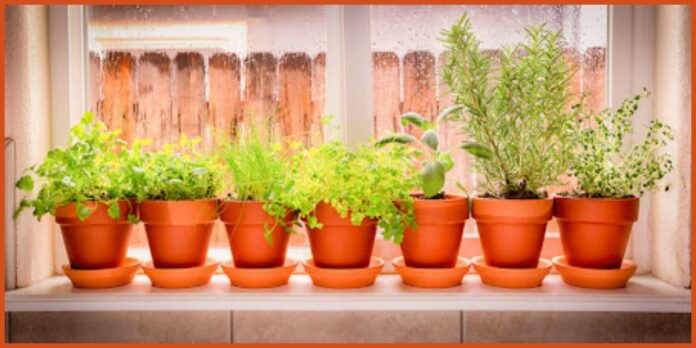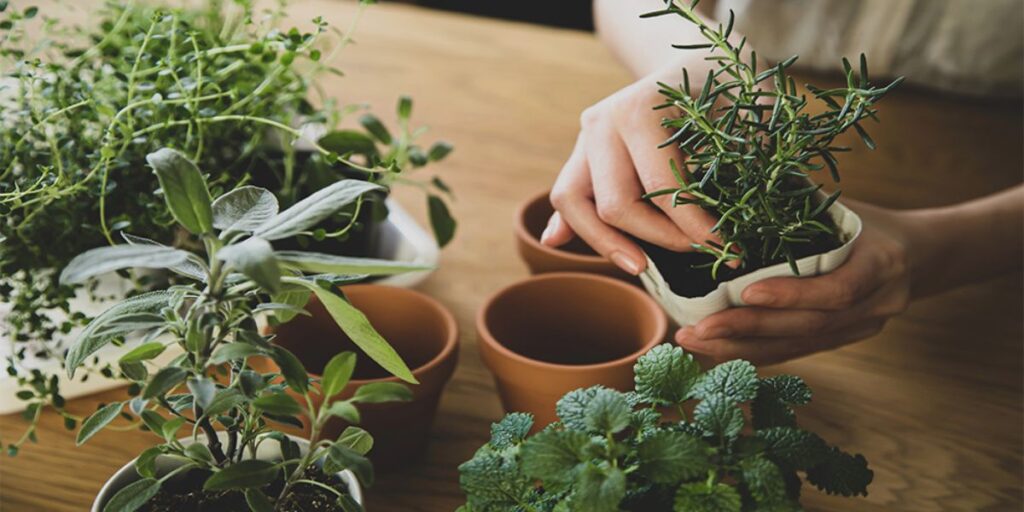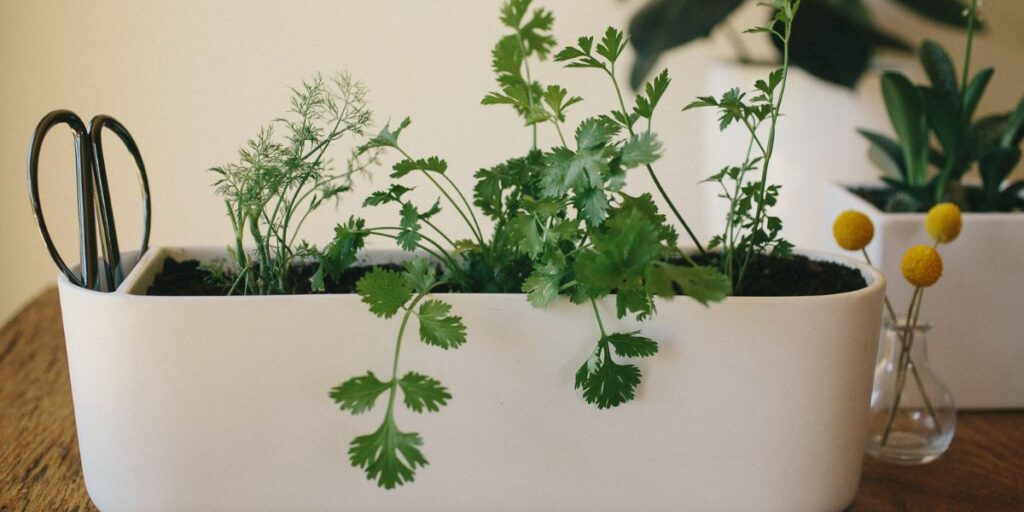Growing herbs indoors is an easy and rewarding way to add fresh, flavorful ingredients to your meals. Whether you live in a small apartment or want to extend the growing season through the winter, cultivating herbs indoors provides convenience and freshness at your fingertips. Many herbs are well-suited to indoor environments and can thrive with the proper care and conditions. In this guide, we will explore the best herbs to grow indoors and how to nurture them for optimal results.
Why Grow Herbs Indoors?
Growing herbs indoors offers many advantages, including:
- Freshness: Nothing beats the flavor and aroma of freshly harvested herbs. Growing them indoors allows you to snip exactly what you need at the moment.
- Convenience: With herbs growing just steps from your kitchen, you won’t need to make trips to the store for a handful of basil or parsley. They’re always within reach.
- Control: Indoors, you have more control over the growing environment. This can lead to healthier plants, free from pests or unpredictable weather conditions.
- Aromatic Appeal: Many herbs release pleasant scents, which can naturally freshen the air in your home, creating a soothing atmosphere.
Now that you’re sold on the idea of growing herbs indoors, let’s look at some of the best varieties that thrive in pots and window sills.
Top Herbs to Grow Indoors
Basil (Ocimum basilicum)
Basil is a popular and versatile herb known for its bright and bold flavor, making it a staple in Italian dishes like pesto and caprese salad. Indoors, basil prefers a sunny spot with at least 6-8 hours of sunlight daily. Place your basil on a south-facing window or under grow lights for best results.
Care Tips: Keep the soil slightly moist but avoid overwatering. Pinch off flowers as they appear to encourage leaf growth and prevent the plant from becoming leggy.
Mint (Mentha spp.)
Mint is a hardy herb with a refreshing aroma and flavor, perfect for teas, desserts, and savory dishes. It’s an ideal indoor herb because it can thrive in lower light conditions and grows rapidly.
Care Tips: Mint prefers well-draining soil and should be watered regularly but not excessively. Since mint is a fast grower, frequent trimming will help manage its spread and keep it bushy.
Thyme (Thymus vulgaris)
Thyme is a low-maintenance herb that’s perfect for seasoning roasted vegetables, meats, and soups. It’s a compact herb that doesn’t take up much space, making it great for small indoor gardens.
Care Tips: Thyme enjoys plenty of sunlight, so place it near a sunny window. Let the soil dry slightly between waterings, as it doesn’t like to sit in overly moist conditions. Prune regularly to encourage bushy growth.
Parsley (Petroselinum crispum)
Parsley is a nutritious and widely used herb, ideal for garnishing dishes or adding flavor to sauces, salads, and soups. Both curly and flat-leaf parsley varieties grow well indoors.
Care Tips: Parsley needs moderate sunlight, around 4-6 hours per day. Water it consistently to keep the soil moist, but be careful not to overwater. Harvest parsley by snipping the outer leaves, which will promote further growth.
Rosemary (Rosmarinus officinalis)
Rosemary is a robust and aromatic herb that’s perfect for seasoning meats, bread, and stews. It also adds a pleasant fragrance to your home. Rosemary thrives in bright light, so a sunny window is ideal.
Care Tips: Allow the soil to dry out slightly between waterings, as rosemary prefers drier conditions. Be sure to trim the plant regularly to keep it from becoming too woody and to promote new growth.
Chives (Allium schoenoprasum)
Chives are easy to grow indoors and add a mild onion or garlic flavor to dishes like salads, eggs, and dips. They can tolerate lower light levels, making them a good option for kitchens with less sunlight.
Care Tips: Chives need regular watering to keep the soil moist. Trim them frequently to encourage new growth and prevent the plant from becoming too sparse.
Oregano (Origanum vulgare)
Oregano is another hardy herb that’s a favorite in Italian and Mediterranean cooking. It has a slightly spicy, peppery flavor that enhances the taste of pizzas, sauces, and roasted vegetables.
Care Tips: Oregano prefers full sunlight, so place it near a sunny window. Water the plant only when the soil feels dry to the touch, as oregano doesn’t like overly wet conditions. Pinch back the stems to encourage bushier growth.
General Tips for Growing Herbs Indoors
- Lighting: Most herbs need plenty of light to thrive. Place your herbs near a sunny window, preferably south-facing, or use grow lights if your space doesn’t get enough natural light.
- Watering: Herbs prefer well-draining soil, and it’s essential to avoid overwatering. Check the moisture level by sticking your finger into the soil—if it feels dry, it’s time to water. Be mindful of the individual water requirements for each herb.
- Temperature: Indoor herbs typically thrive in temperatures between 65°F and 75°F. Keep them away from cold drafts or hot, dry air from heating vents.
- Container: Use pots with drainage holes to prevent water from accumulating at the bottom, which can lead to root rot. You can also use a saucer to catch excess water.
- Fertilizing: Indoor herbs may need a little extra nourishment since they are not exposed to outdoor soil. Use a balanced, water-soluble fertilizer once a month to keep them healthy.
Conclusion
Herbs to grow indoors is a delightful and practical way to have fresh ingredients all year round. Basil, mint, thyme, parsley, rosemary, chives, and oregano are just a few of the best herbs that can thrive indoors with the right care. Whether you’re a beginner or a seasoned gardener, cultivating herbs indoors allows you to enjoy fresh flavors, vibrant greenery, and fragrant aromas right in your kitchen. Start small, care for your plants, and enjoy the benefits of homegrown herbs every day!




